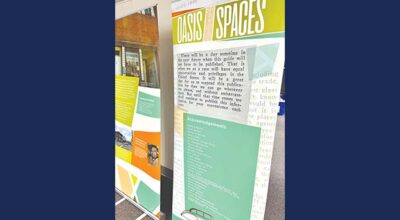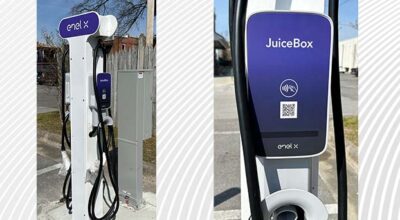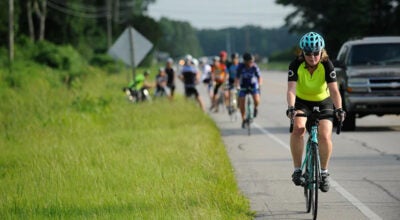Revealing the face of poverty
Published 1:25 am Sunday, January 8, 2012

Bill Booth, president of the Beaufort County branch of the NAACP, talks about poverty at a “listening session” for the Jan. 19 Truth and Hope Tour during which participants from Raleigh will tour eastern North Carolina to experience rural poverty. (WDN Photo/Vail Stewart Rumley)
It’s called the black belt—the swath of land encompassing Beaufort, Edgecombe, Halifax, Hertford, Washington, and Pasquotank counties—and from the era of slavery until present day, the minority population in this area has been plagued by chronic poverty. That poverty exists is widely recognized. But its existence is rarely a part of public discourse.
“Most people won’t talk about it…there’s a stigma attached to it,” said Dr. Jarvis Hall, political science professor and director of the Institute for Civic Engagement and Social Change at North Carolina Central University. “People don’t talk about these problems that impact all aspects of life…the kind of challenges people face every day of their lives.”
Hall was in Washington Thursday night to facilitate a meeting of local NAACP branch leaders, Human Relations Committee members, and other interested parties, as part of the preliminary reconnaissance for The Truth and Hope Tour. The tour is sponsored by the NAACP, the University of North Carolina Center on Poverty, Work and Opportunity, the North Carolina Justice Center, and the Institute for Civic Engagement and Social Change and was designed to “shine the light of truth on poverty and despair in North Carolina,” according to Rev. Dr. William Barber Jr., president of the North Carolina NAACP and one of the organizers of the event.
On Jan. 19, a group of foundation leaders, scholars, activists, and members of the media will leave Raleigh by bus to journey into the black belt and experience the face of poverty in North Carolina. The first stop on the tour is Washington. The others are Roper, Elizabeth City, Ahoskie, Scotland Neck, and Rocky Mount.
“This is the beginning of a series of events we hope will elevate the issue of poverty in North Carolina,” said Hall.
At the Temple of Jesus Christ meeting last Thursday, the issue of poverty was the only point of discussion in an effort to decide how to portray Washington’s impoverished when the bus from Raleigh arrives on Jan. 19. They touched on poverty’s causes; the effects of chronic unemployment; the issue of young men caught in the continual loop of the criminal justice system due to poverty and a lack of strong male role models.
Bill Booth, president of the Beaufort County branch of the NAACP, spoke about his experience during a 2005 poverty study in which he participated: “I was surprised, really shocked, at the living conditions of some of the people in this county. Since 2005, I’ve noticed a lot of people that were working then, aren’t working now. Now I’m constantly bombarded with people who are unemployed and have been for years.”
During the course of the meeting the group addressed education, affordable housing, teen pregnancy, prison-to-work programs, and the often inescapable, cyclical nature of abject poverty.
State statistics provide data that implicates more of the population sliding into greater poverty. According to the analysis by the North Carolina Budget and Tax Center of the 2010 United States Census American Community Survey, North Carolina’s poverty rate has grown by 22–percent from 2007, while median household income has dropped 12.3 percent.
The numbers are even more stark for the working poor in Beaufort County, where the median income is $5,000 less than the state figure.
“I left New York to find a better way of life,“ said Washington resident, Michael Haddock. “Here I am, trying to do the right thing. I’ve only had a 50–cent raise in five years.”
Booth summed up the real-world translation of the statistics for Beaufort County: “A lot of people have lost their homes—it used to be people would rent houses. Now they’re trying to rent rooms;” as well as general morale: “The ones that can move have gotten up and gone. The ones who are here are just existing.”
Poverty Statistics
North Carolina Beaufort County
Unemployment
(October 2011) 9.6% 10.6%
Living in poverty 17.4% 20.7%
Average weekly wage $791 $623
Median household income $43,326 $38,194
Economic Disparities in North Carolina by Race 2010
Community Poverty rate Child poverty rate Avg. Annual Unemployment Rate
African–American 27.7% 40.2% 17.4%
Latino 33.9% 42.6% 10.7%
White 11.8% 14.0% 8.7%
State-level 17.5% 24.9% 10.5%
Statistics provided by the NC Justice Center, from the NC Budget and Tax Center





